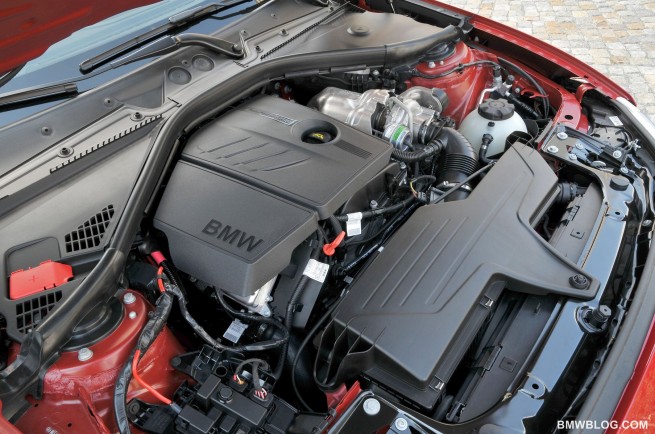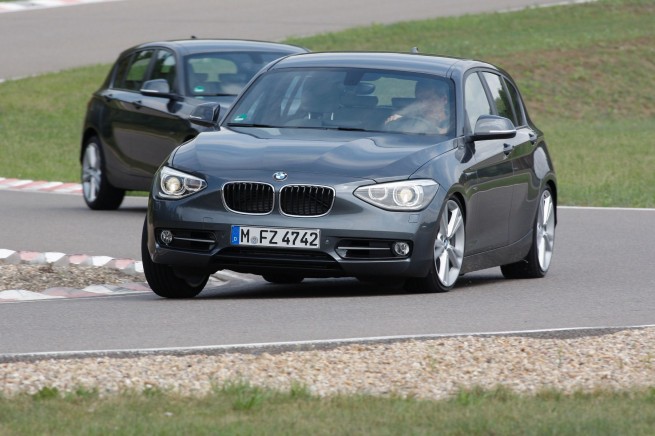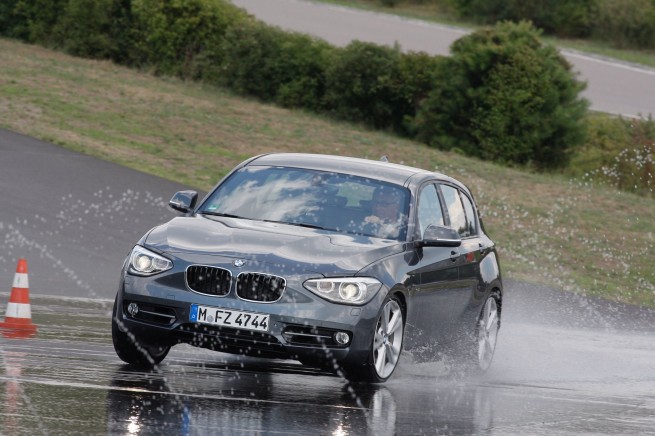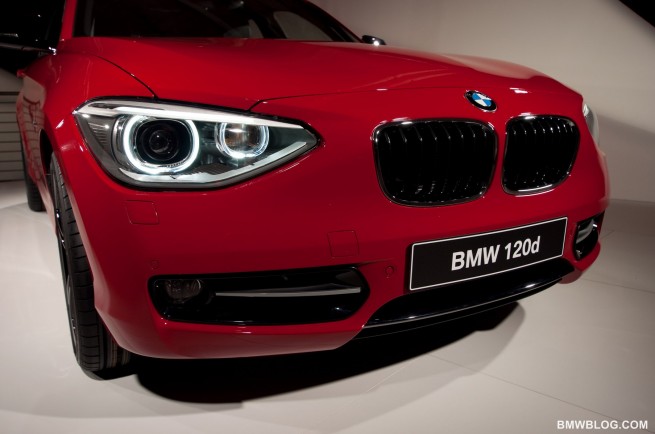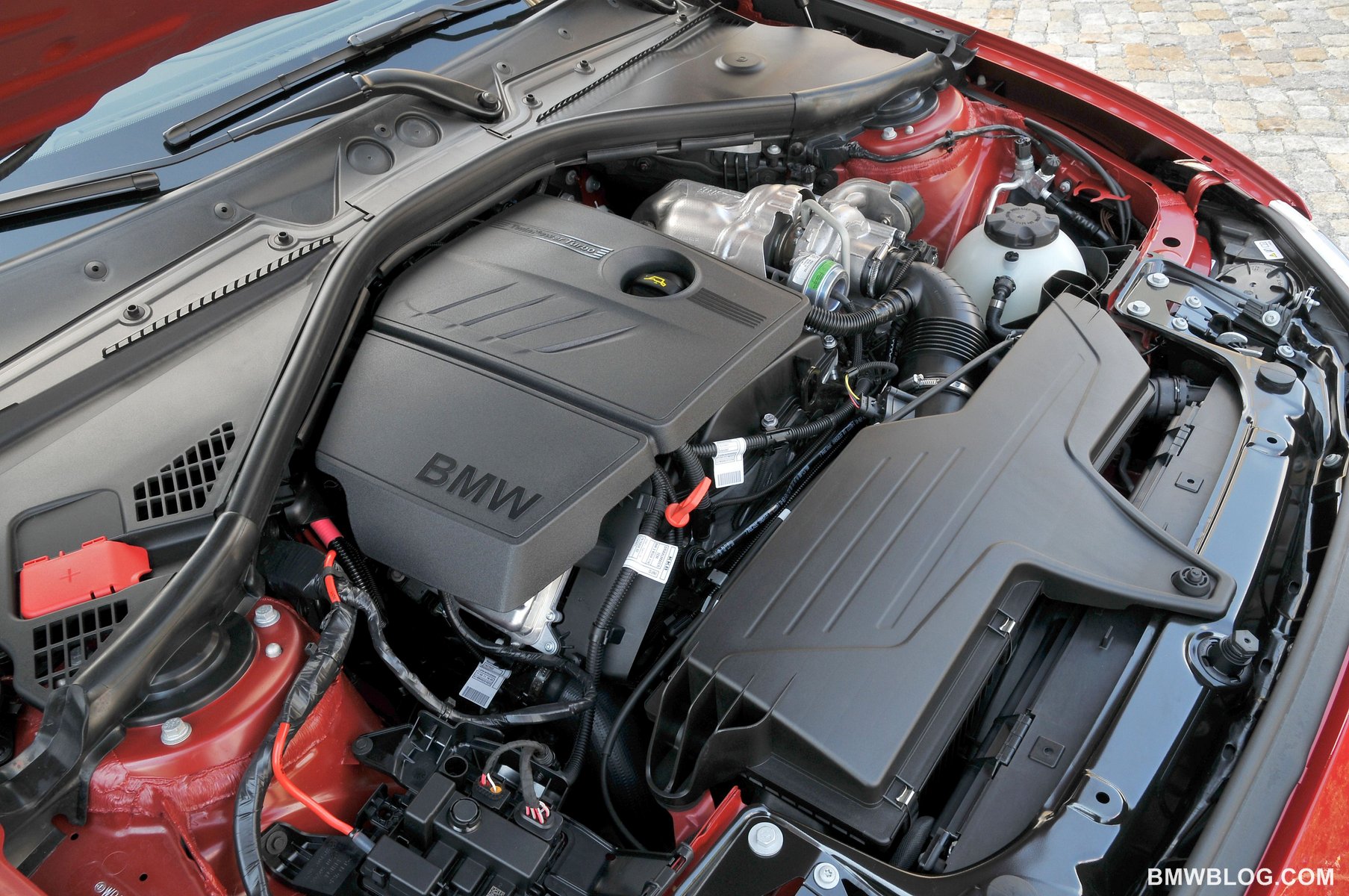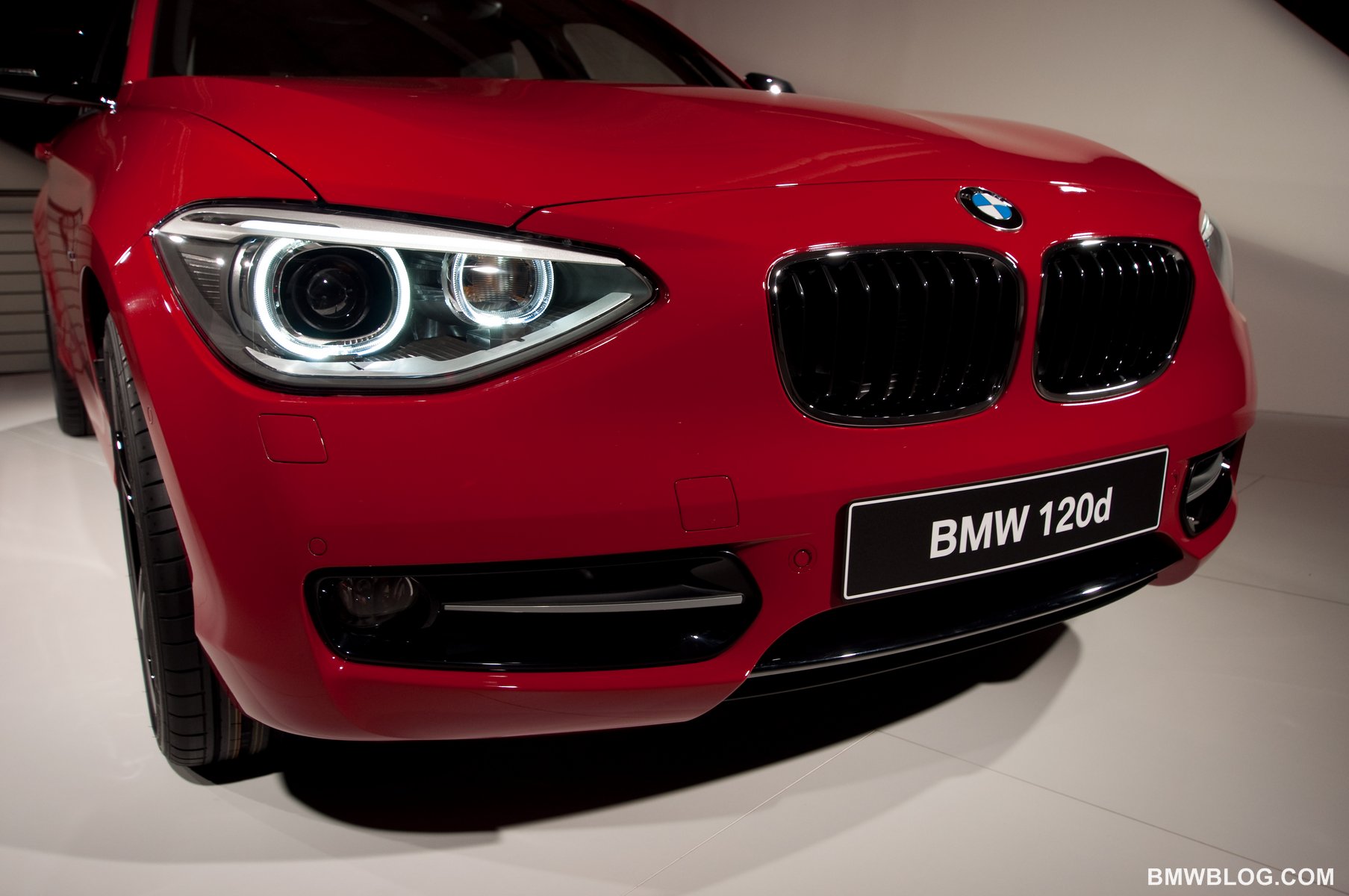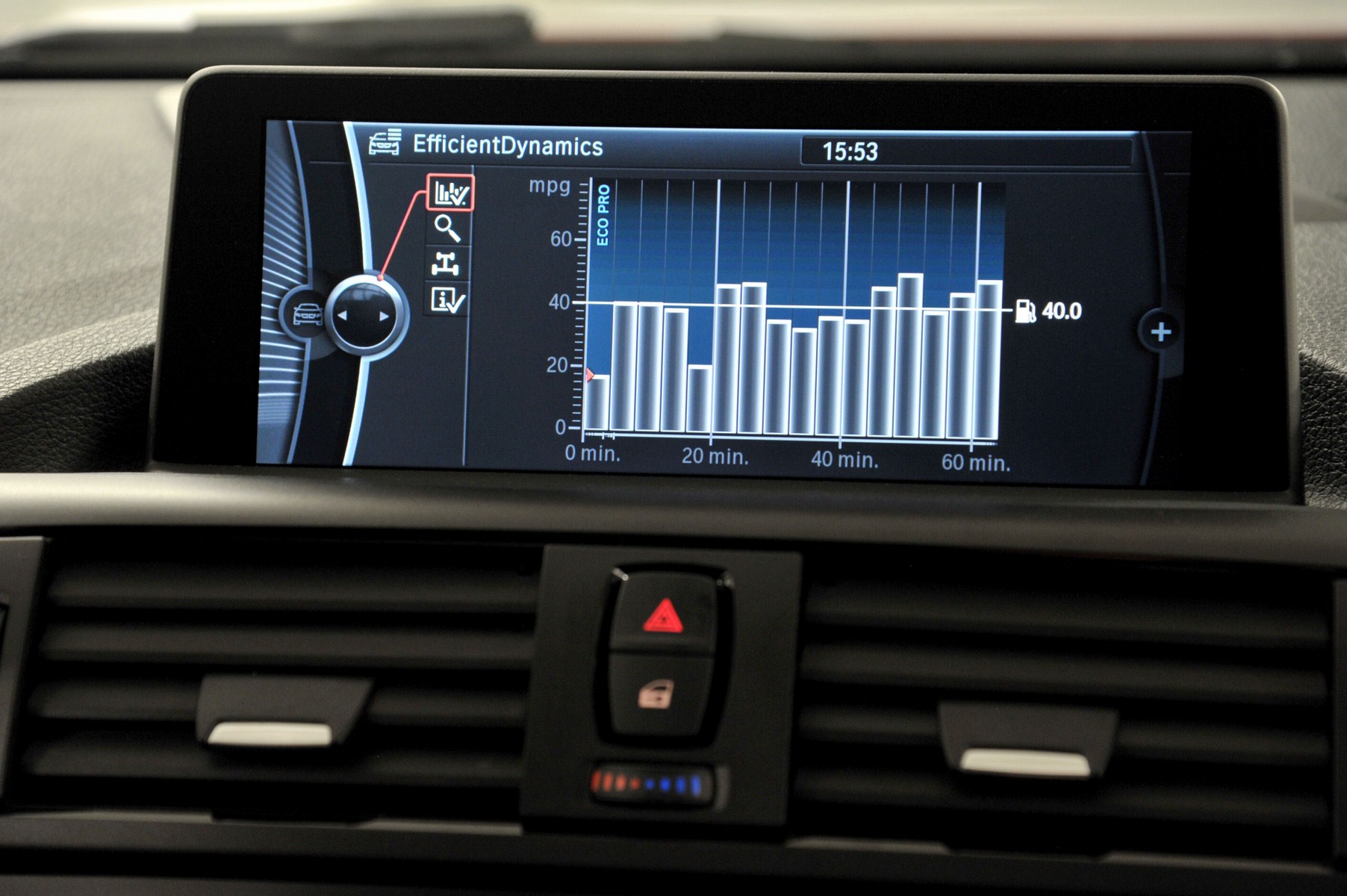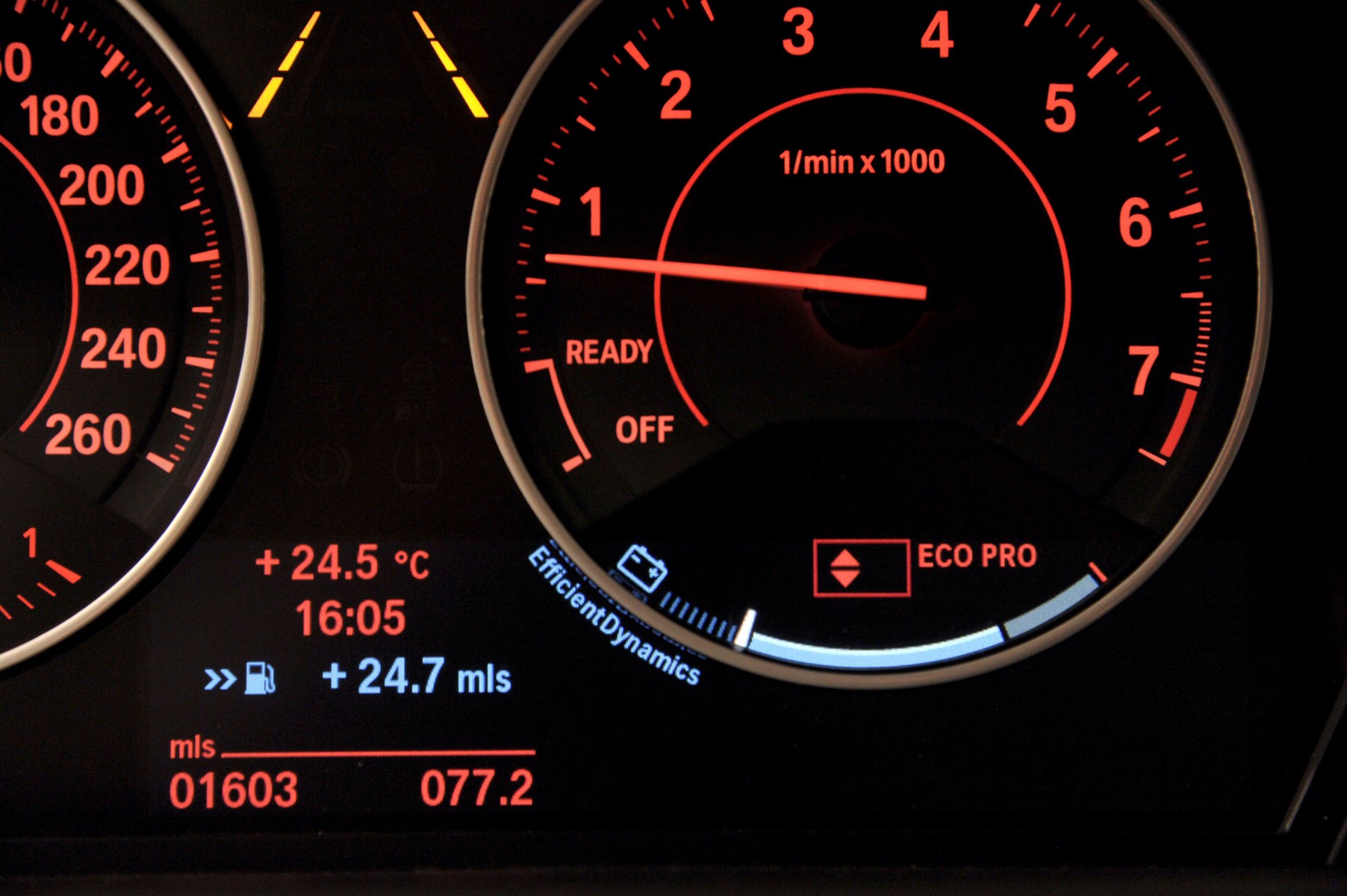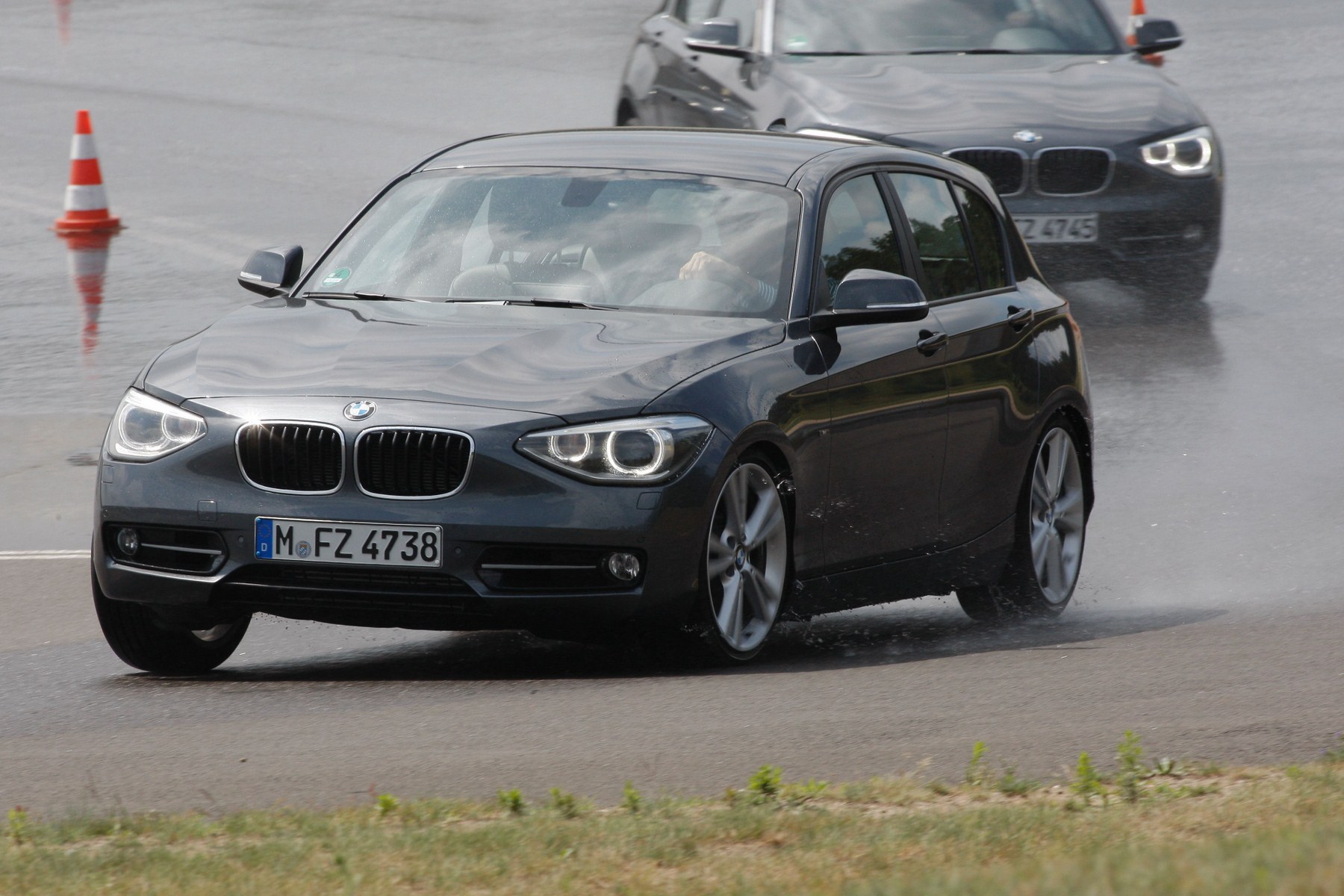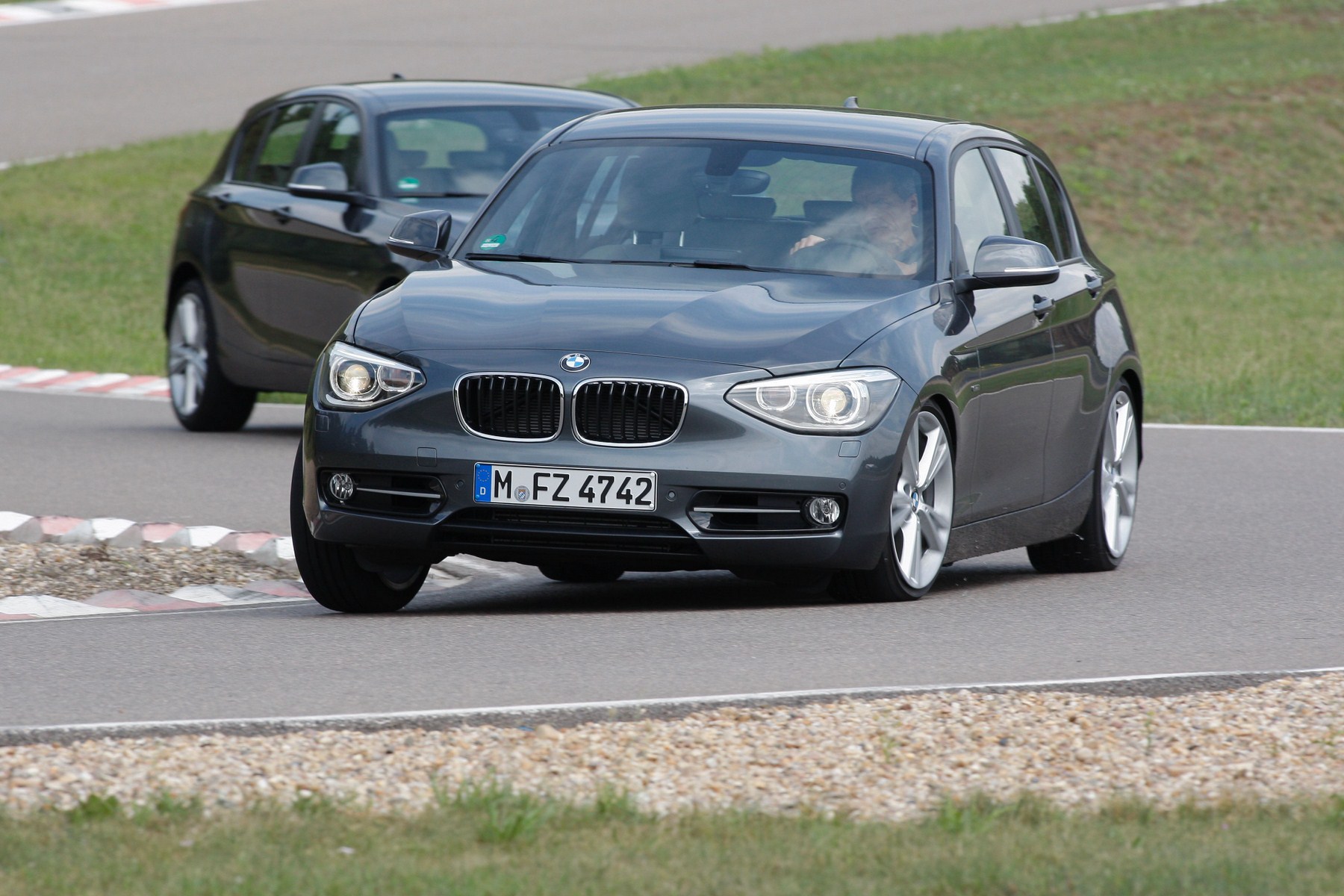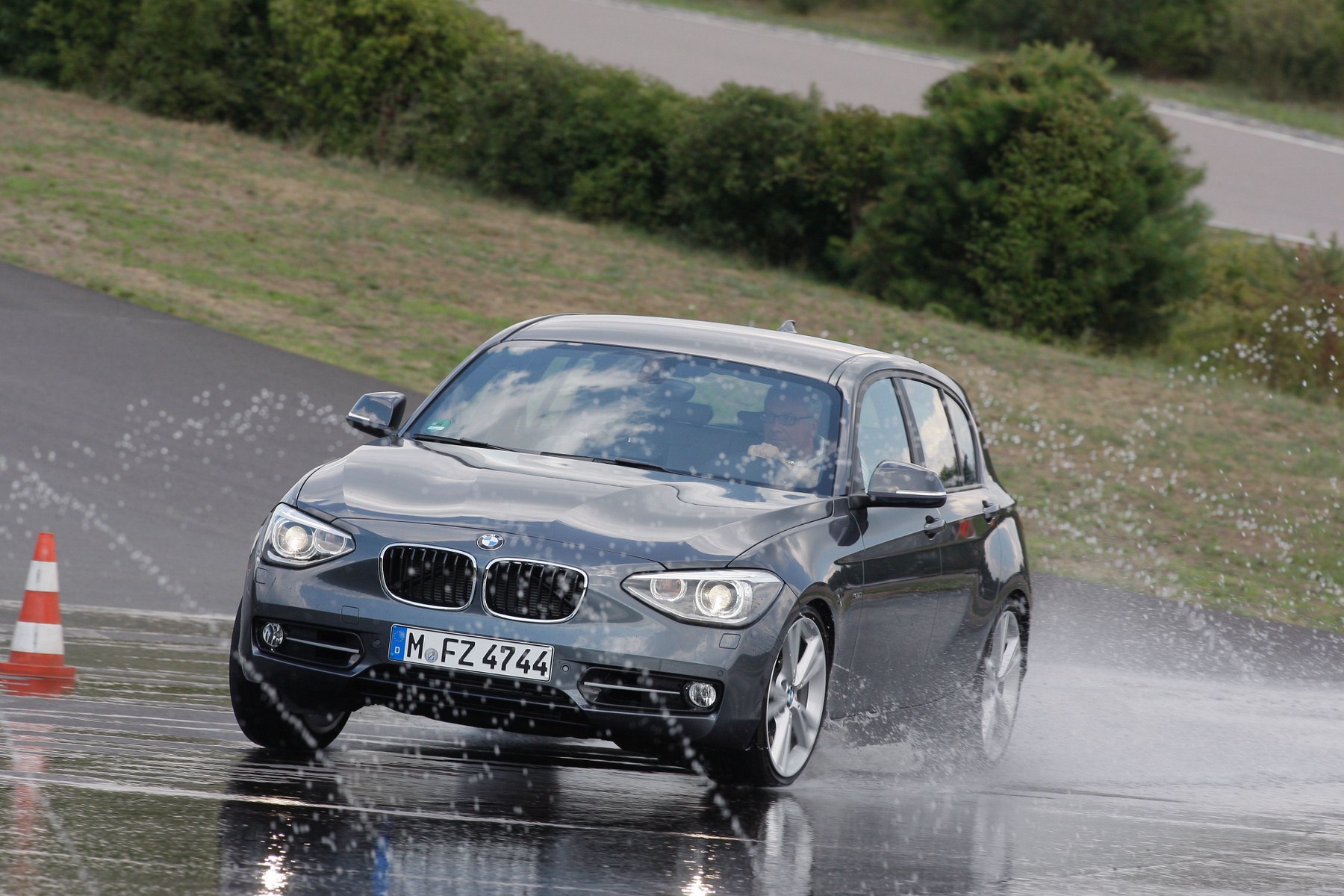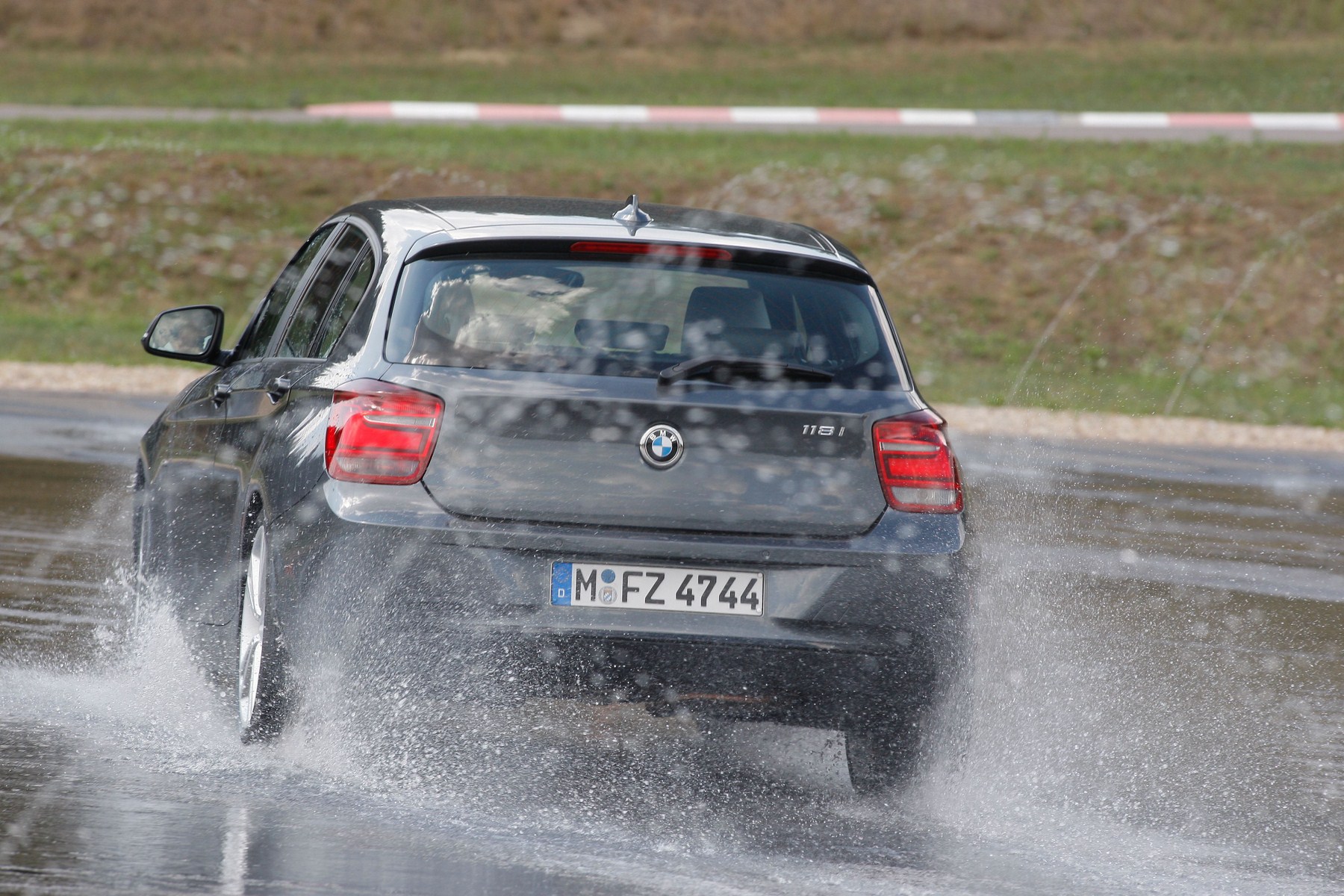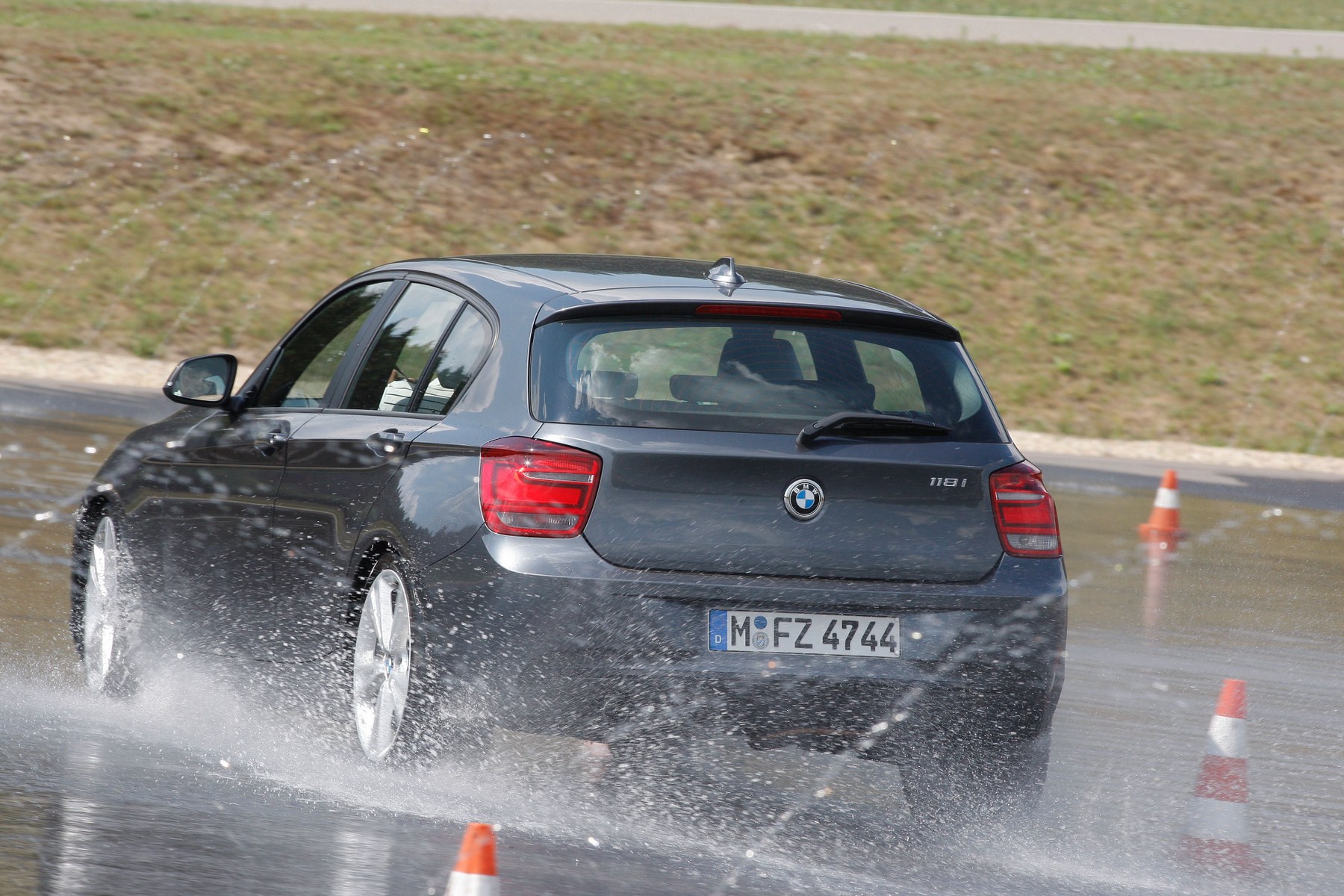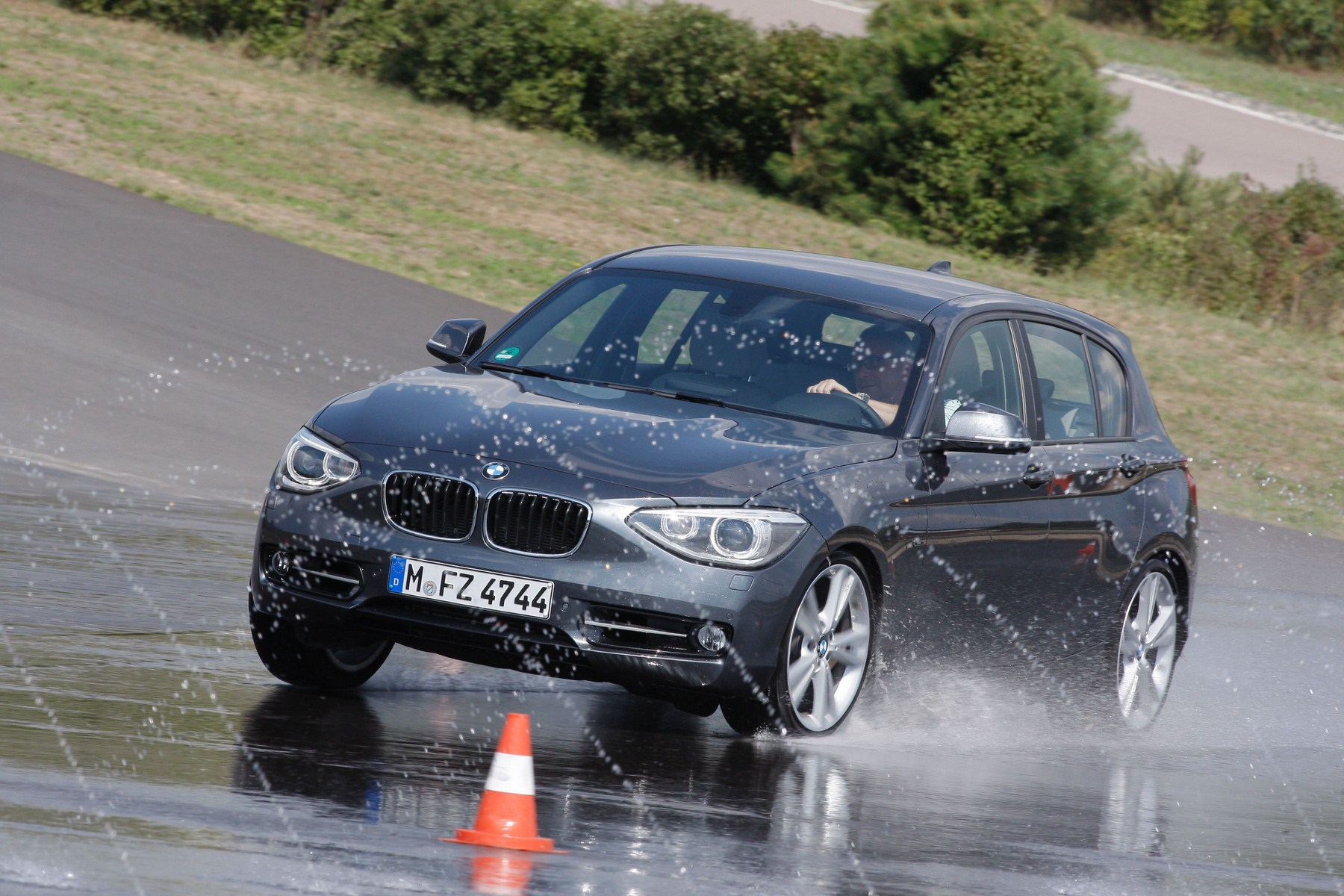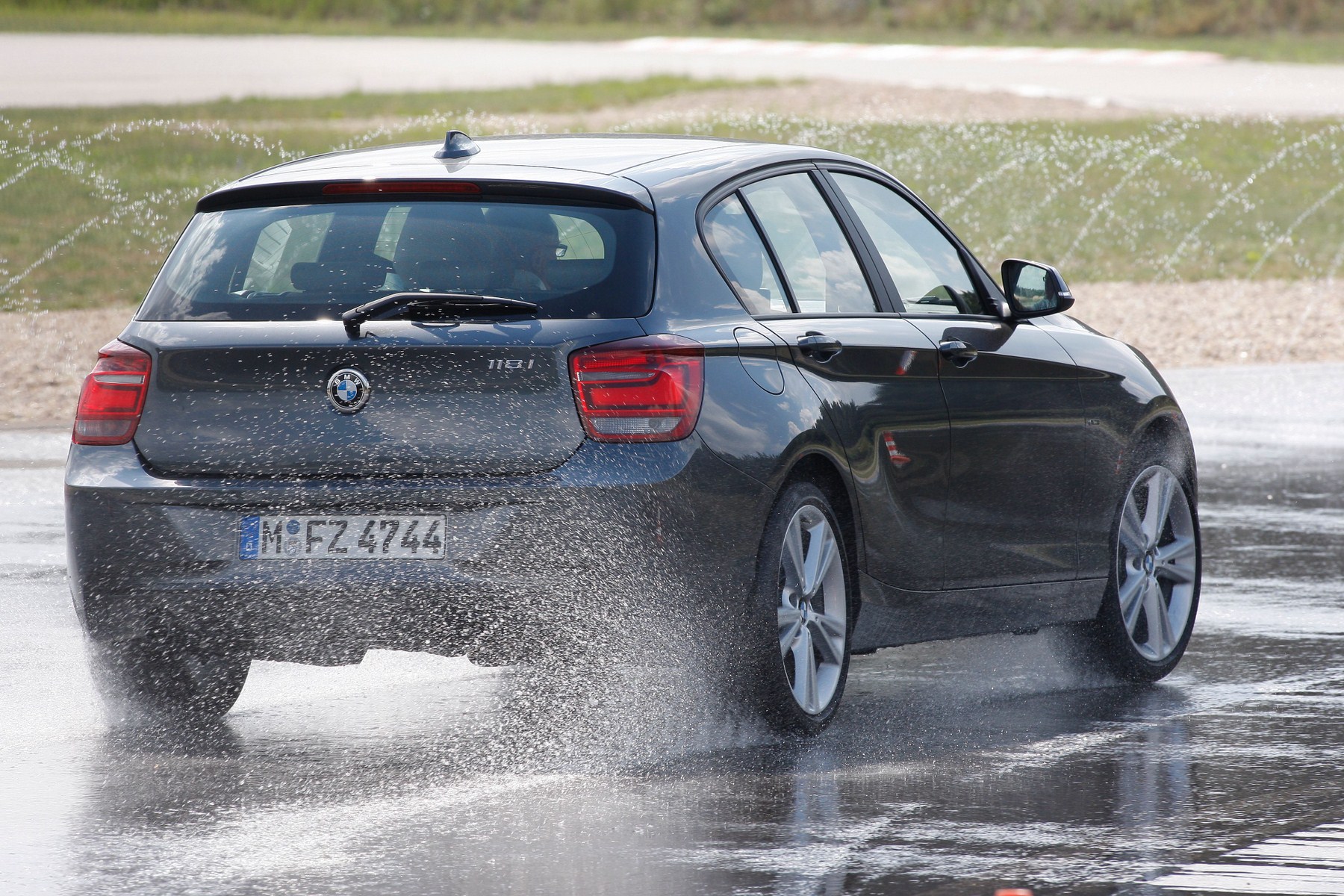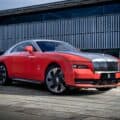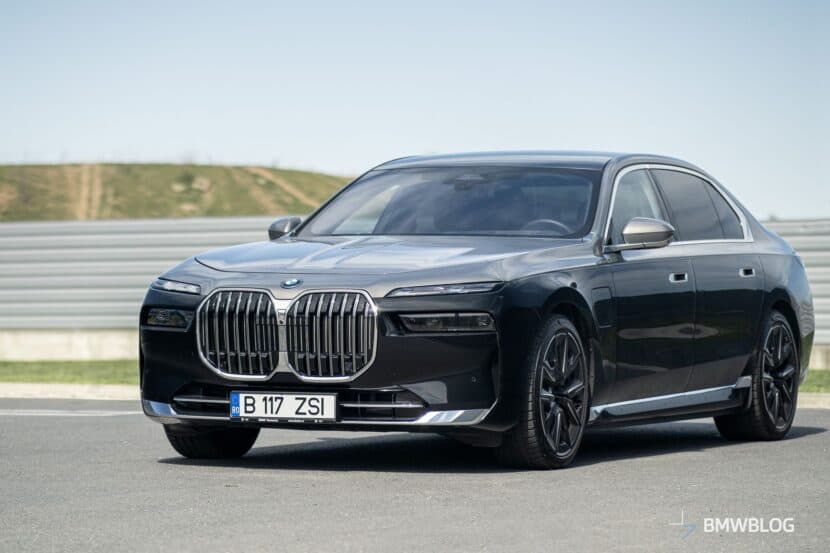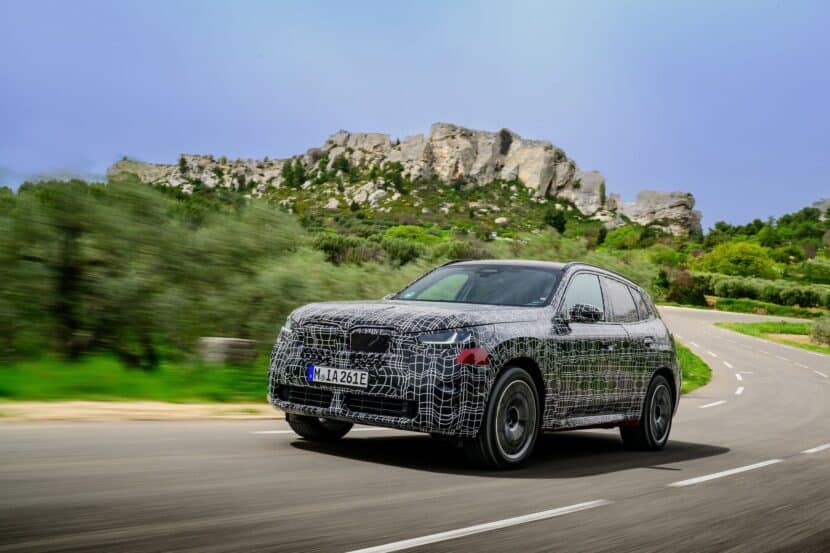At a small, private testing facility about an hour’s drive from Berlin, BMWBLOG had the opportunity to unleash the latest rendition of the 1 series. We were given the keys to a 6-speed manual 118i which is curiously named, and in actual fact sports a 1.6 liter under-hood. The track layout was short and twisty, a tire melter that requires high levels of agility. For a full track report on the car’s dynamics, read on…
Sitting track-side the new 1 series looks the part, with flared wheel arches filled by 17 inch lightweight alloys wrapped in sticky Pirelli rubber. The longitudinal prominence in the hood suggests a lion’s heart lies beneath – and while it is admittedly tiny, it’s still a relative beast (think crazed rabid squirrel with really big teeth). First things first – let’s get rid of the electronic nannies grannies and get a proper feel for the chassis towards the limit.
 BMW has slightly modified their dynamic control system’s buttonology. Gone is the famed “DTC” button with subsequently displayed triangular warning light encircled by a spinning arrow and centered with an exclamation mark. (Editor’s note: we miss this symbol as it grew to have cult-status among our racer and driver friends. It is a badge of honor for those who proficiently drift and drive the ‘razor edge’ of car control. I’ve even seen helmet stickers in its likeness and it’s about the only tattoo I’ve ever considered). We bemoan its disappearance and strongly implore BMW to restore its use in future models. It has more cache than they know. It has been replaced by a simple icon that states, “DTC Off.” No much arousal there… but back to what matters.
BMW has slightly modified their dynamic control system’s buttonology. Gone is the famed “DTC” button with subsequently displayed triangular warning light encircled by a spinning arrow and centered with an exclamation mark. (Editor’s note: we miss this symbol as it grew to have cult-status among our racer and driver friends. It is a badge of honor for those who proficiently drift and drive the ‘razor edge’ of car control. I’ve even seen helmet stickers in its likeness and it’s about the only tattoo I’ve ever considered). We bemoan its disappearance and strongly implore BMW to restore its use in future models. It has more cache than they know. It has been replaced by a simple icon that states, “DTC Off.” No much arousal there… but back to what matters.
Up through the gears and the 1.6 keeps pulling. Okay, so it doesn’t snap your neck back – but it does give your neck a work out. As you come upon the turbo boost, strong thrust is felt from your stomach – this is the stuff we lust for, the reason we buy BMWs. Their engines – apparently of any size – are magical. While our track had very short straights and we could not reach high speeds, on the autobahn we were two breaths away from 230 km/h. Leafing through the official press release, BMW claims a top speed of 225, so either I had a strong back wind in my favor (the road was level, not downhill) or they have slightly more juice in the package than they admit. It wouldn’t be the first time – and this fresh engine wasn’t even broken in; expect slight power increases once the surfaces machine into each other, as with any properly broken in internal-combustion engine. BMW claims 170 hp at 4,800 rpm and 184 lb ft of torque from 1,500 rpm to 4,500 rpm. Factory 0-60 time stands at 7.4 seconds, but we suspect some of the magazines may get it there slightly quicker.
Off to turn one, a second-gear left hander, and BMW’s new 1 series feels ready to play. Dipping into the brakes to transfer weight, the car turns in cleanly for the apex with solidity and a sharp line. Powering out to the exit, the 1er’s rear tires are clawing for grip! What size is this engine again?
We are presented with a quick right-left transition and the 1er responds light on its feet, without drama. There is mild to moderate body-roll noted, but as this does not adversely effect suspension kinematics, it’s not of great concern (I once frequented track days with a friend who drove an E30 with original dampers (read: completely worn out and useless dampers). He would look like a ship about to capsize near the apex, but he was fast nonetheless. I suppose this is a stretch, but in small part proves the point). In any case, body roll is still relatively minimal and completely acceptable in this car class – cognizant of the intended target market who admittedly will not be ‘track junkies.’
BMW offers three models within the new 1 series lineup, each of them with their own suspension settings. For the first time in the competitive segment, the 1 series is offered with M dynamic suspension allowing for comfort on rough roads as well as taut damping during spirited, or track driving – adjustable through a toggle switch located beside your right knee. BMW’s on-hand chassis engineer pointed out that in its most aggressive setting, the model equipped with M dynamic suspension is firmer than the ‘sport’ model and with almost no associated weight penalty. A third ‘urban’ model line is also offered with a comfort suspension. Both the sport and M dynamic suspensions have been lowered by 10 mm.
Next we approach turn 4, a long, higher speed left-handed sweeper. Here we can explore the new 1 series’ balance and steering behavior, and while we find mild to moderate understeer present, it has been greatly reduced from the previous generation (Editor’s note: both of the previous generation 1 series I’ve tracked had inline 6 engines, one being the 135i, which notoriously understeered. The larger engine increases the forward weight bias and makes for an overall heavier front end, resulting in… you guessed it: understeer. I’ve been told by the new 1 series chassis engineer that had I driven the 4 cylinder models in the past, handling would have been improved. Nonetheless, the design team was aware of this trait and worked to reduce this behavior in the new 1 series). Through the apex the car is well balanced on throttle – and off throttle or with a hint of brakes can be coxed into oversteer. Through lower-speed corners this 1.6 turbo 1 series had a hard time getting its tail out, but wide, big angle drifts could still be accomplished with a few tricks of the trade.
For maximum acceleration and fast lap times, you must be mindful to keep the turbo spooled. Whereas in naturally aspirated cars you may chose to come partially or fully off the throttle between shifts, in the 1.6 turbo 1 series it’s advisable to keep some exhaust gases flowing so you’re on the power coming into the next gear. Failure to do so will result in considerable lag (for the racetrack! not necessarily for street driving wherein we found minimal lag and great personality from the turbo’d engine). So, keep your boost up and enjoy every ounce of performance – think WRC’s anti-lag system if you’re still unsure of the purpose (but not exactly the method).
The F20 1 series is a few stones lighter (geological stones, not British stones) than the previous generation, despite being 85 millimeters longer and 17 millimeters wider than previous model, while incorporating more standard features and technology – no small engineering feat. Aluminum was used heavily throughout the suspension, and high-strength steel was used more liberally throughout the chassis to save weight.
After unwinding and throttling up from the last corner, it’s time to get hard on the brakes, and once again the new 1 series does not disappoint. Pedal feel is initially soft, building up to positive, linear brake modulation. I found the brakes to be powerful at all times, with no brake fade noted – at least on this racetrack. Away from the track, the brakes were very easy to modulate in traffic, making for a very smooth and relaxed ride and driving experience. No ‘jerky McGee’ coffee spilt on passenger’s laps in this car.
Finally, the engine note. It is sublime, whining and hissing its way through the gears with lovely audible turbo spool and waste gate pressure releases. We positively love that BMW have embraced the inherent turbocharged personality, and haven’t tried to mute it or hide it as in their other engines thus far (including the 1M’s). Turbo engines are different, they don’t rev to the stratosphere and they do have some however infinitesimally small amount of lag on throttle response – but they are turbos and should be enjoyed as such! They are different animals with their own unique personality and character. Remember that crazed, rabid squirrel? Don’t underestimate it.
We were pleased with the new 1 series’ on-track performance and look forward to future track tests with the upcoming 6 cylinder models. Of course, we really look forward to a spicy version refined and honed by the M division. At this time, BMW is completely mum on the project – but with all our hopes and dreams (no exaggeration here) we count on it – no matter what its nomenclature in the end: 1M, M2 or otherwise. Every time I look at the F20’s new bold headlights I see it, and every time I look for the apex I feel it – a successor to the already legendary 1M. Is it too soon to put our name on a waiting list?



